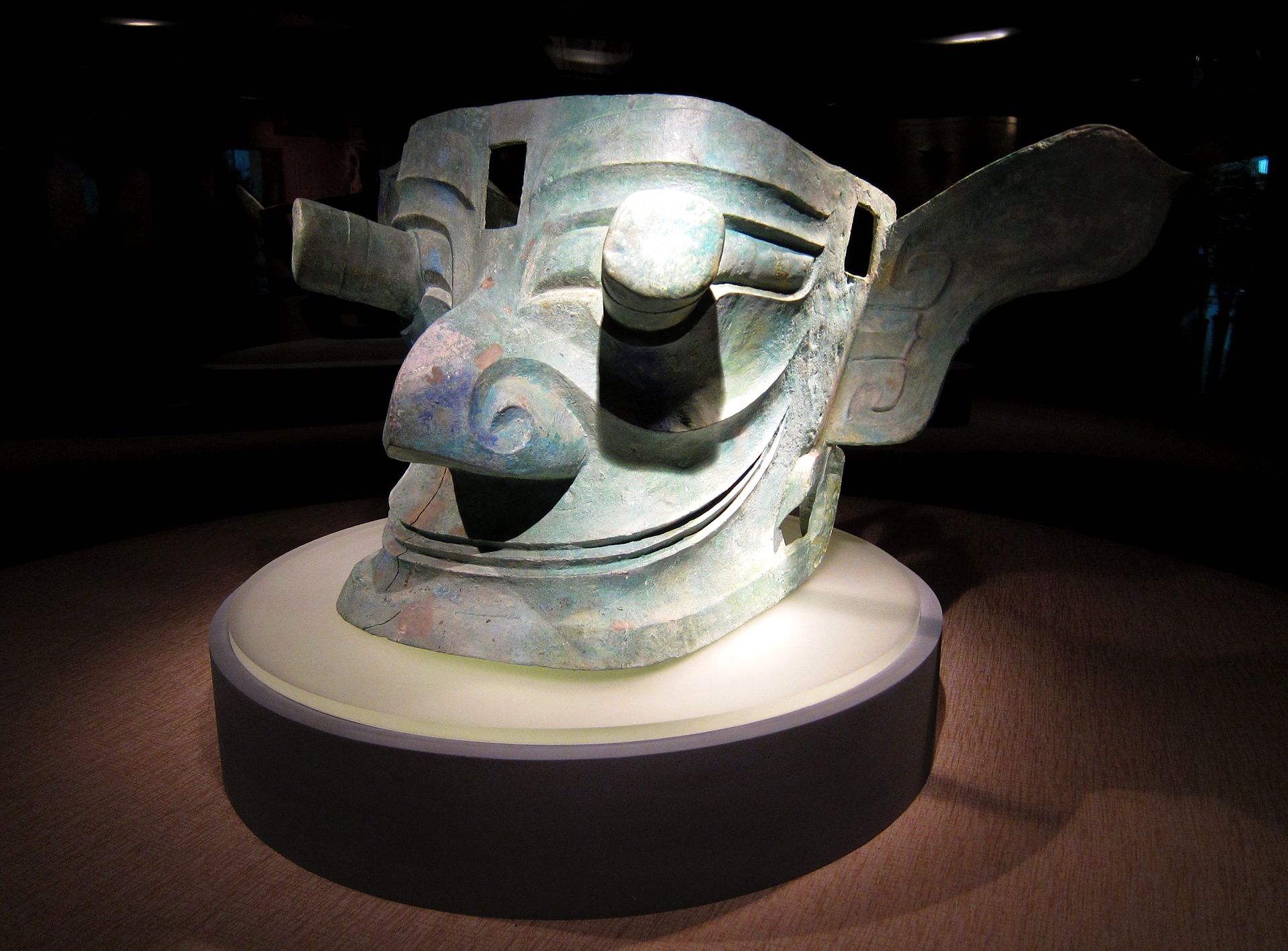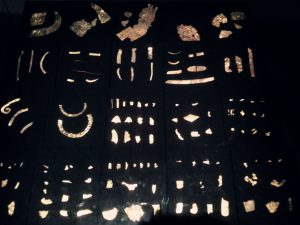

Cancong is described as having bulging eyes and colourful clothes: he developed early silk industry and became known as Qingyishen 青衣神 cyan-cloth-god. The name Can Cong 蠶叢 itself also means Silkworm Bush: it’s not clear at this stage whether the silkworm is named after the person or vice versa but either way he is indivisible connected to silk!
The Shu kingdom was taken over when the Qin dynasty united China over 2,000 years ago, and is now part of the Sichuan area around Chengdu. The Shu name and silk making tradition still survives and is used most famously for Shu brocade silk.
In 1987 archeologists uncovered the ancient city of Sanxingdui outside Chengdu, followed by Jinsha in 2001, revealing ancient 3-5,000 year old culture believed to be the original Shu kingdom. This includes the world’s oldest larger-than-life bronze figure weighing 180kg.
If you visit the Chengdu area (highly recommended) you can see these in Sanxingdui museum 56km from Chengdu or the Jingsha museum in Chengdu itself.

[…] the Sichuan area silk production is believed to be invented or started by Cancong, legendary ruler of Shu kingdom (Chengdu region of Sichuan), and Shu brocade silk is recorded in […]
[…] Sichuan is also a cultural and spiritual centre of remote misty valleys and fertile plains surrounded by mountains. The natural protection of the mountains allowed a strong culture to develop in the kingdom of Shu, remembered today for the Shu silk brocade – see the story of Cancong. […]